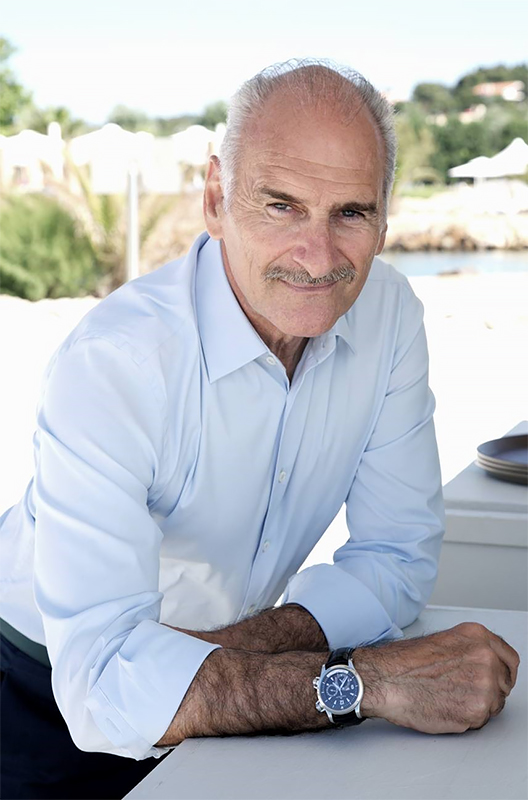Fokion Zissiadis was born in Thessaloniki in 1956. He studied architecture at the Aristotle University of Thessaloniki and went on to do a Masters degree at the University of Pennsylvania in Philadelphia USA, graduating in 1983. His career to date has been in the hotel and tourism sector, continuing the family tradition as a shareholder in the well-known Sani Resort in Halkidiki and Vice President of Sani S.A.
He first took an interest in photography - mainly photographing buildings and urban landscapes - during his years as an architecture student. Later it was nature, on a small or large scale, which became his narrative priority, while he gradually developed more personal, interpretative views of the landscapes he sought to capture. His photography expressed a desire to preserve a wide-angle "view through a personal window" on the world around him. An active man with a passion for the natural world and a love of adventure, he planned journeys to particular destinations where nature reveals the primitive building blocks of which she is made, where the great age of the natural landscape is to be seen, where the visitor is challenged to engage fully and completely with the natural world around him.
His photographic work covers a wide range of geological phenomena and diverse terrains: deserts, glaciers, savannahs, volcanoes, rivers, seas, mountain ranges and uplands. He has visited and photographed locations as varied as Peking, Moscow, New York, Los Angeles, Buenos Aires, the capital cities of Europe, Egypt, Patagonia, Botswana, Namibia, South Africa, the Bahamas, Israel, Cappadocia, Constantinople, Malta, Oman, Qatar, Dubai and, most recently, Iceland.
His photographs use a keen geometrical sense to interpret the quintessence of the landscape with all those features through which the genius loci is expressed. Through his personal photographic idiom, Fokion Zissiadis expresses his own aesthetic sense of moment and place. The dwarfed human figures almost always included in his photographic compositions create a strong sense of the insignificance of man when confronted with the grandeur and majesty of the natural world. On all his photographic journeys he is accompanied by his lifetime partner and advisor - his wife Mata Tsolozidi Zissiadis.
An active man with a passion for the natural world and a love of adventure
"Passion under fate becomes pathos. The Aristotelian adage denotes not only my relationship with the Arctic Line, yet my overall feelings towards the area. Intimate sentiments about the burning issue of climate change become the vehicle for the lens to capture the unfathomable beauty of Greenland. Icebergs that flawlessly exemplify a celebration of random wandering and ceaseless transformation. Water as the ultimate procreator. Time that grows into one's living; life that metamorphoses into one's chronos. At the end, it's all about the Analogue Line.
Nature seems to be on line. And so is myself. Perhaps, it is also a line that connected me to the publishing of my first book on Iceland with teNeues, and now to my fruitful collaboration with Rizzoli Libri and the upcoming printing, in 2020, of a book with my photos on Vietnam." - Fokion Zissiadis
